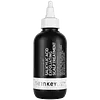What's inside
What's inside
 Key Ingredients
Key Ingredients

 Benefits
Benefits

 Concerns
Concerns

 Ingredients Side-by-side
Ingredients Side-by-side

Water
Skin ConditioningMethyl Gluceth-20
HumectantHydroxyethyl Acrylate/Sodium Acryloyldimethyl Taurate Copolymer
Emulsion StabilisingBetaine
HumectantPropanediol
SolventCocamidopropyl Betaine
CleansingGlycerin
HumectantAcetyl Tetrapeptide-3
Skin ProtectingAcrylates/C10-30 Alkyl Acrylate Crosspolymer
Emulsion StabilisingAlanine
MaskingArginine
MaskingAspartic Acid
MaskingBis-Diglyceryl Polyacyladipate-2
EmollientButylene Glycol
HumectantCaprylyl Glycol
EmollientCarbomer
Emulsion StabilisingCarica Papaya Fruit Extract
Skin ConditioningCellulose
AbsorbentCitric Acid
BufferingDextran
Dipropylene Glycol
HumectantEthylhexylglycerin
Skin ConditioningGlycine
BufferingHelianthus Annuus Extract
EmollientHistidine
HumectantHydrolyzed Corn Protein
Skin ConditioningHydroxypropylcellulose
EmulsifyingImperata Cylindrica Root Extract
Skin ConditioningIsoleucine
Skin ConditioningMentha Piperita Oil
MaskingMenthol
MaskingMenthyl Lactate
MaskingOryza Sativa Bran Extract
Skin ConditioningPanthenyl Triacetate
PCA
HumectantPhenoxyethanol
PreservativePhenylalanine
MaskingProline
Skin ConditioningRosmarinus Officinalis Leaf Extract
AntimicrobialSalicylic Acid
MaskingSerine
MaskingSodium Hydroxide
BufferingSodium Lactate
BufferingSodium PCA
HumectantTetrasodium Glutamate Diacetate
Threonine
Tocopherol
AntioxidantTrifolium Pratense Flower Extract
AstringentValine
MaskingWater, Methyl Gluceth-20, Hydroxyethyl Acrylate/Sodium Acryloyldimethyl Taurate Copolymer, Betaine, Propanediol, Cocamidopropyl Betaine, Glycerin, Acetyl Tetrapeptide-3, Acrylates/C10-30 Alkyl Acrylate Crosspolymer, Alanine, Arginine, Aspartic Acid, Bis-Diglyceryl Polyacyladipate-2, Butylene Glycol, Caprylyl Glycol, Carbomer, Carica Papaya Fruit Extract, Cellulose, Citric Acid, Dextran, Dipropylene Glycol, Ethylhexylglycerin, Glycine, Helianthus Annuus Extract, Histidine, Hydrolyzed Corn Protein, Hydroxypropylcellulose, Imperata Cylindrica Root Extract, Isoleucine, Mentha Piperita Oil, Menthol, Menthyl Lactate, Oryza Sativa Bran Extract, Panthenyl Triacetate, PCA, Phenoxyethanol, Phenylalanine, Proline, Rosmarinus Officinalis Leaf Extract, Salicylic Acid, Serine, Sodium Hydroxide, Sodium Lactate, Sodium PCA, Tetrasodium Glutamate Diacetate, Threonine, Tocopherol, Trifolium Pratense Flower Extract, Valine
Water
Skin ConditioningPropanediol
SolventSalicylic Acid
MaskingBetaine
HumectantPanthenol
Skin ConditioningPEG-40 Hydrogenated Castor Oil
EmulsifyingPhenoxyethanol
PreservativePolyquaternium-37
Hexylene Glycol
EmulsifyingCapryloyl Glycine
CleansingCitronellyl Methylcrotonate
MaskingSodium Hydroxide
BufferingEthylhexylglycerin
Skin ConditioningXylitylglucoside
HumectantTrisodium Ethylenediamine Disuccinate
 Reviews
Reviews

Ingredients Explained
These ingredients are found in both products.
Ingredients higher up in an ingredient list are typically present in a larger amount.
Betaine is a common humectant (a substance that promotes retention of moisture). It's known to be gentle on the skin and can help balance hydration.
This ingredient is best for improving hydration and soothing irritated skin. Studies also show it helps even out skin tone.
Fun fact: Betaine is naturally created in the skin and body. The kind found within cosmetic products can be either plant-derived or synthetic.
Another name for betaine is trimethylglycine.
Learn more about BetaineEthylhexylglycerin (we can't pronounce this either) is commonly used as a preservative and skin softener. It is derived from glyceryl.
You might see Ethylhexylglycerin often paired with other preservatives such as phenoxyethanol. Ethylhexylglycerin has been found to increase the effectiveness of these other preservatives.
Phenoxyethanol is a preservative that has germicide, antimicrobial, and aromatic properties. Studies show that phenoxyethanol can prevent microbial growth. By itself, it has a scent that is similar to that of a rose.
It's often used in formulations along with Caprylyl Glycol to preserve the shelf life of products.
Propanediol is an all-star ingredient. It softens, hydrates, and smooths the skin.
It’s often used to:
Propanediol is not likely to cause sensitivity and considered safe to use. It is derived from corn or petroleum with a clear color and no scent.
Learn more about PropanediolSalicylic Acid (also known as beta hydroxy acid or BHA) is a well-known ingredient for treating skin that struggles with acne and clogged pores. It exfoliates both the skin's surface and deep within the pores to help clear out buildup, control oil, and reduce inflammation.
Unlike AHAs (alpha hydroxy acids), salicylic acid is oil-soluble. This allows it to penetrate into pores which makes it especially effective for treating blackheads and preventing future breakouts.
Salicylic acid is also known for its soothing properties. It has a similar structure to aspirin and can calm inflamed or irritated skin, making it a good option for acne-prone skin that is also sensitive.
Concentrations of 0.5-2% are recognized by the U.S. FDA as an over-the-counter topical acne product.
It can cause irritation and/or dryness if one's skin already has a compromised moisture barrier, so it's best to focus on repairing that before introducing this ingredient into your routine.
While salicylic acid does not increase sun sensitivity, it’s still important to wear sunscreen daily to protect your skin.
If you are looking for the ingredient called BHA or Butylated Hydroxyanisole, click here.
Learn more about Salicylic AcidSodium Hydroxide is also known as lye or caustic soda. It is used to adjust the pH of products; many ingredients require a specific pH to be effective.
In small amounts, sodium hydroxide is considered safe to use. However, large amounts may cause chemical burns due to its high alkaline.
Your skin has a natural pH and acid mantle. This acid mantle helps prevent harmful bacteria from breaking through. The acid mantle also helps keep your skin hydrated.
"Alkaline" refers to a high pH level. A low pH level would be considered acidic.
Learn more about Sodium HydroxideWater. It's the most common cosmetic ingredient of all. You'll usually see it at the top of ingredient lists, meaning that it makes up the largest part of the product.
So why is it so popular? Water most often acts as a solvent - this means that it helps dissolve other ingredients into the formulation.
You'll also recognize water as that liquid we all need to stay alive. If you see this, drink a glass of water. Stay hydrated!
Learn more about Water